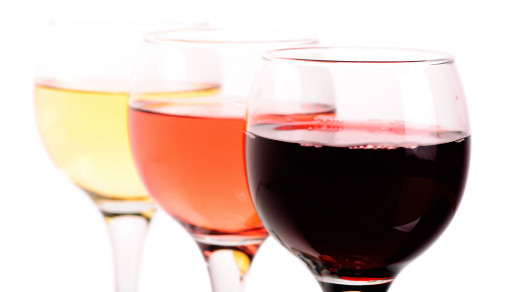What Do American Wine Consumers Want? Fruity, a Little Sweet and Not Expensive
Date£º
2015-11-13 14:19 Source£º
http://www.winespectator.com Author:
Aaron Romano Translator:
A survey of wine drinkers shows that their preferences are varied, but a few rules still apply

Photo by: Thinkstock/Zoonar
Asked to select the types of wine they like, 74 percent picked red, 72 percent white and 43 ros¨¦.
Winemaking and grapegrowing are passions, but they¡¯re also businesses. Every winemaker wants know what consumers are looking for in a bottle. To try and answer that question, Sonoma State University and the Wine Business Institute conducted their second-annual survey of American wine-consumer preferences, releasing the results this week.
They found that when it comes to wine, the American consumer still loves Chardonnay and Merlot, prefers fruity or semi-sweet wines to dry and tannic, and says that price is the No. 1 factor in deciding what to buy.
¡°We set out to understand what the pulse point is of the American wine consumer,¡± said Dr. Liz Thach, a professor of management and wine business who headed the survey for Sonoma State with her colleague Dr. Kathryn Chang. (Thach has contributed stories to Wine Spectator.) Their team surveyed 1,072 American wine consumers, ranging from ages 21 to 68, from every state, 59 percent of them women. Ethnicity was 65 percent Caucasian, 13 percent Hispanic, 11 percent African American and 11 percent Asian. The median annual income of the sample was $50,000 to $69,999, with 18 percent making more than $100,000 per year.
¡°It always surprises me,¡± said Thach. ¡°When you talk to the everyday American, they still love Chardonnay and Merlot.¡± Despite strong growth of red blends, Pinot Noir and lesser-known white wines in recent years, when subjects were asked to pick their favorite grapes from a list, 50 percent included Chardonnay and 49 percent included Merlot in their selections (respondents could pick as many as they wanted). About 41 percent chose white Zinfandel, 40 percent selected Pinot Grigio and 38 percent chose Cabernet Sauvignon and Pinot Noir.
Dan Wildermuth, vice president of marketing for Rodney Strong in Sonoma, was surprised to see Merlot at the top and believes it's because Merlot is typically the base for red blends. ¡°As certain varietals grow, they cannibalize others, and the red blend category is growing at the expense of Merlot,¡± he said.
Those red blends may be onto another thing, the study found. Asked to describe their favorite types of wines, 58 percent said ¡°fruity,¡± 57 percent chose ¡°semi-sweet¡± and 56 percent chose ¡°smooth.¡± Many red blends currently selling well on the market fit that description.
While there¡¯s been an intense focus on dry wines in recent years, the survey suggests that table wines with some sweetness still sell. Only 26 percent of respondents favored dry styles. ¡°This is the perfect example of the American palate,¡± said Thach, pointing to the California Pinot Noir brand Meiomi, which has grown rapidly in recent years. Thach finds it a quintessential example of what American wine drinkers want: a plush and intensely fruity red.
Marcia Kunde Mickelson, at Kunde Family Estate, thinks sweet is a part of our culture. ¡°Perhaps people like to say they like dry, but a touch of sweetness isn¡¯t a bad thing,¡± she said. Mickelson did note that semi-sweet wines are not what they see driving sales at Kunde, however, suggesting that there continues to be room for dry wines depending on the consumer.
Meiomi sells for about $22 a bottle, making it a slight splurge for the average survey respondent. The results showed that 72 percent said cost was the most important factor when selecting a wine, and half said they typically spent $10 to $20 for wine when drinking at home.
So who are these wine drinkers? Only four percent of the sample rated themselves as experts, while 21 percent said they had advanced knowledge. However, the majority ranked themselves as having intermediate to novice wine knowledge. More than half consumed wine daily or several times per week, while the remaining said they were occasional drinkers.
According to Thach, those who identified themselves as connoisseurs or advanced in the survey were willing to spend more and showed a preference for dry and more tannic wines. She also noted that it¡¯s not just the older generations that put themselves into these categories. ¡°Baby boomers are still the bread and butter when it comes purchasing wine, but we found that the 30-plus segment of millennials [30 to 37 years old] are really into wine,¡± she said.
Asked why they drink wine, the largest majority of respondents, 83 percent, said because they like the taste, followed by relaxation and socialization reasons. Also, 57 percent said they drink wine because it goes well with food.
Mickelson says that wineries need to appeal to all those reasons in their sales pitch. ¡°When we market wines, we think it's important to convey the message that wine enhances life,¡± she said.
So what does this mean for the industry? While the results offer interesting insights into the American wine drinker, Wildermuth noted that the survey had a large slant toward the millennial group, with 56 percent of the sample between the ages of 21 and 37. ¡°They don¡¯t have the purchasing power yet, but the survey reinforces and validates our own research,¡± he said. That may influence wineries¡¯ decisions in years to come.